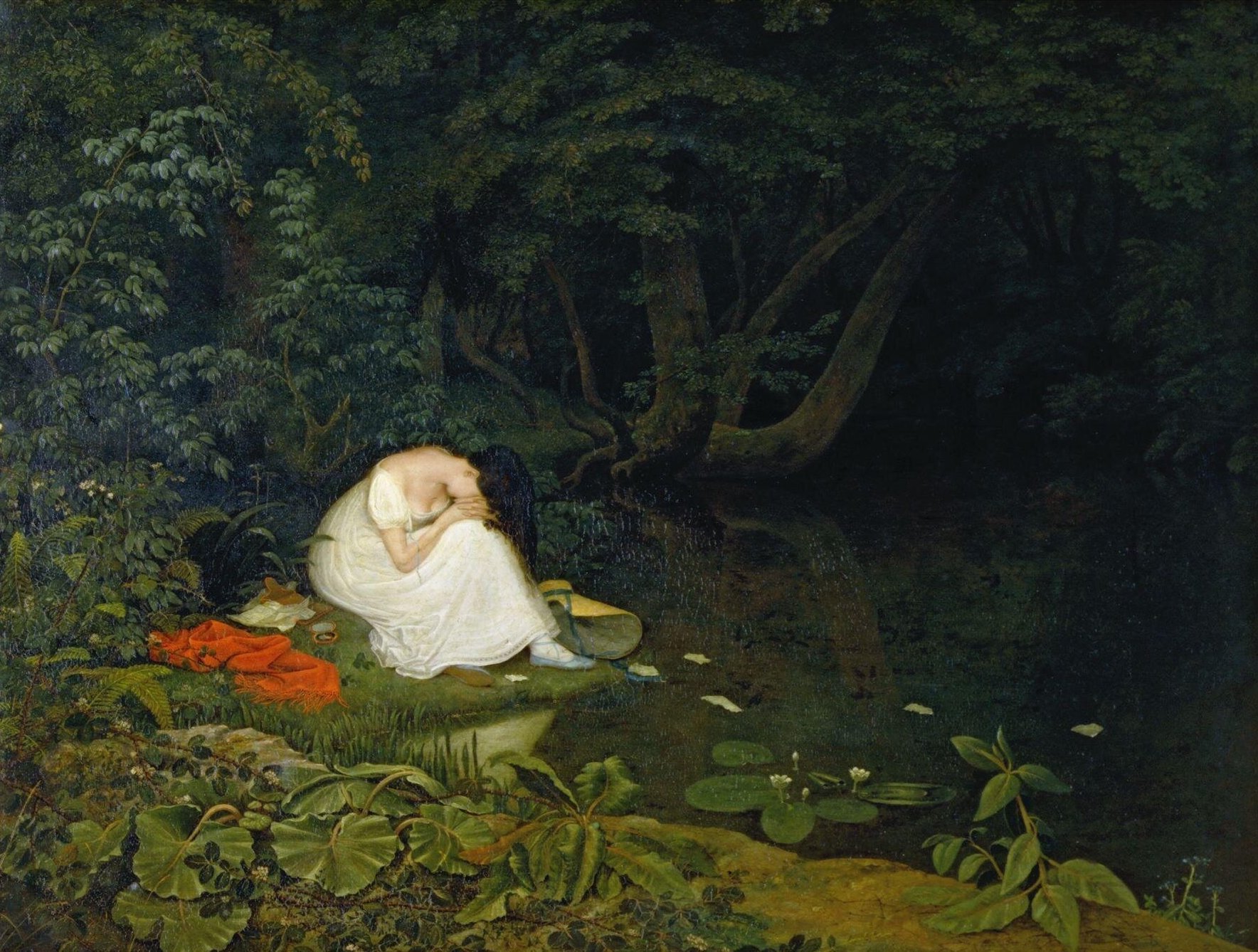Introducing “After Love”
Francis Danby, Disappointed Love, Britain, 1821, oil on panel, © Victoria & Albert Museum, London, FA.65[O].
What happens when the excitement, happiness, and comfort of romantic love have departed, leaving a trail of emotional devastation in their wake? When this crisis is at its most acute, what does it mean to suffer from a broken heart? The answer to this seemingly simple question is much more complex than we might imagine, and changes substantially over time and space. This project sets a new research agenda for the history of romantic heartbreak by conceptualising it as a distinct form of extreme grief, which could occur as a result of romantic rejection, after infidelity, divorce, or following the death of a suitor or spouse. For the hero of Johann Wolfgang von Goethe’s best-selling novel The Sorrows of Young Werther (1774), the abject misery of a broken heart involved an existential crisis forcing one to exist without faith, ‘without hope, without purpose’. For the feminist philosopher Mary Wollstonecraft, writing after her desertion by the soldier and land speculator Gilbert Imlay in 1795, it was a misfortune ‘so great, as to silence the usual expressions of sorrow’. For physicians such as Jean-Nicolas Corvisart, in his Essay on the Organic Diseases and Lesions of the Heart (1806), heartbreak was a very real medical possibility: ‘pleasure, pain, fear, anger, all the sensible affections’ could leave the heart agitated, paralysed, and even destroyed. The physiologist and psychologist Wilhelm Wundt perhaps put it most succinctly in his Lectures on Human and Animal Psychology (1863) when he argued that ‘despair dies of a broken heart’, situating heartbreak as the final and often fatal physical destination of despair.[1]
After Love is a major new project funded from 2023-7 by an Early Career Research, Development and Engagement Fellowship from the Arts & Humanities Research Council.[2] It sets a new paradigm for the heartbreak which follows the end of romantic relationships by examining it as an embodied emotional experience, using methods drawn from histories of emotions, gender, medicine, and the body.
This research will be used to underpin wider engagement work on romantic heartbreak in the present day, which has recently been subject to renewed popular attention from writers and journalists, in best-selling works such as Jessie Stephens’ Heartsick (2021), Annie Lord’s Notes on Heartbreak (2022) and Florence Williams’ Heartbreak: A Personal and Scientific Journey (2022). Such texts have recognised the visceral power of heartbreak as ‘a kind of death’ and ‘form of exile’ to which ‘our cultural response…is vastly insufficient’.[3] Yet they – and broader cultural discourse on the subject – lack a recognition of the quintessential fluidity and changeability of heartbreak over time and space. The eighteenth and nineteenth centuries on which this project focuses represent the ideal period for illustrating these changes, as a time of enormous flux which fundamentally reshaped how modern society valued particular emotions, how they were experienced by gendered bodies, how individuals understood the physical power of love and grief, and the embodied consequences of excessive feeling. After Love will chart the evolution of romantic heartbreak as an embodied emotional experience during this crucial period, asking, how did these broader shifts shape what it means to be broken hearted in the modern age?
The project establishes new partnerships with organisations including the mental health charity Oxfordshire Mind; the Oxford Visual Arts Development Agency (OVADA), an artist-led arts centre committed to cross-disciplinary collaboration; the visual artists Jill Mueller and Julie Light, who produce award-winning artworks on health, medicine, emotions and embodiment; and the Poetry Pharmacy, the world’s first service prescribing poetic ‘first aid’ for emotional ailments. Outcomes will include a book on the history of heartbreak, a group exhibition at OVADA on ‘Broken Hearts & Broken Bodies’, and a range of public events, including workshops making ‘body maps’ of heartbreak, concluding with a symposium in 2027.
You can get in touch with us here, and sign up for our first event on 20th April 2024, a creative workshop exploring the scents of love and loss at Barracks Lane Community Garden.
References
[1] Johann Wolfgang von Goethe, The Sorrows of Young Werther (London, 1774), p. 81; Mary Wollstonecraft to Gilbert Imlay, Strömstad, Sweden, 7 July 1795, Posthumous Works of the Author of A Vindication of the Rights of Woman (London, 1798), Letter LVII, p. 167; Jean-Nicholas Corvisart, An Essay on the Organic Diseases and Lesions of the Heart and Great Vessels, trans. Jacob Gates (Boston, [1806] 1812), p. 275; Wilhelm Max Wundt, Lectures on Human and Animal Psychology, trans. from the second German edition by Edward Titchner and James Creighton (London, [1863] 1894), p. 370.
[2] Project reference AH/X010716/1: https://gtr.ukri.org/projects?ref=AH%2FX010716%2F1#/tabOverview.
[3] Jessie Stephens, Heartsick: Three Stories of Falling in Love…and What Happens After it Ends (London, 2021), pp. 297-8.
